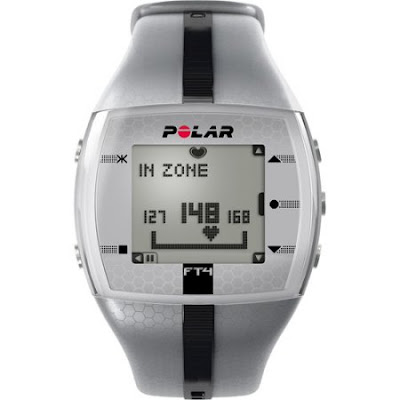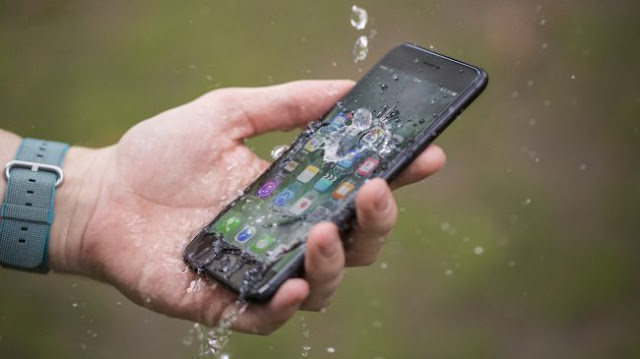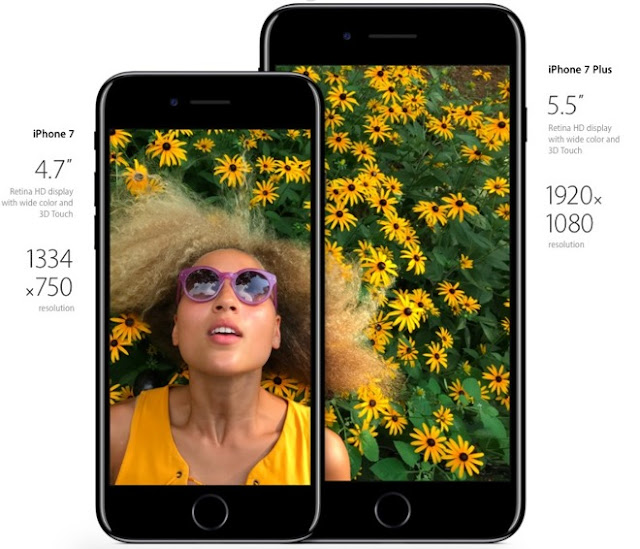Are you still
contemplating whether the iPhone 7 Plus is the right phone for you? Are you still
on the fence? Then you have to read this review on the iPhone 7 plus to make
your stand.
Apple's recent strategy
of bringing out an alphabet that includes all the best bits of the smaller new
iPhone has been a strong one – but this year, the iPhone 7 Plus is a phone
that's markedly better than the smaller model.
That's mostly achieved
through two things: improved battery life and an innovative camera. The former is
always going to be better, given the larger size, but by adding a dual-camera
setup to the mix Apple has made a conscious effort to make the 7 Plus seem like
a distinctly different choice.
There are also new color
configurations, more space to throw in your media and apps, and changes to the
internals – we lose the headphone jack, but gain a new kind of vibrating motor.
All this added fun comes
at a cost though: the 7 Plus is the most expensive iPhone ever. So is it a
price worth paying, or are you going to feel out of pocket?
Launched on
September 16 2016
Starts at $769 (£719,
AU$1,229) for 32GB model
The iPhone 7 Plus went
on sale on September 16… sort of. That was the official release date given by
Apple during its iPhone launch event, but as release day dawned it transpired
that the 7 Plus had been so popular during the pre-order period there wasn't any
stock left at Apple Stores.
At the time the Apple
website said the typical wait for iPhone 7 Plus delivery is 2-3 weeks - but
several months since launch and the handset is much easier to get your hands
on.
The iPhone 7 Plus price
starts at $769 (£719, AU$1,229) for the entry-level 32GB model. Apple has
finally (and thankfully) done away with the 16GB storage option, so you're
getting double the storage over the entry-level iPhone 6 Plus and 6S Plus – but
you'll be paying an extra $20 (£100, AU$40) more for the privilege.
That's not all that much
extra – although for those in the UK that price hike has been amplified by the
vote to leave the EU and the subsequent fall in the value of the pound, hitting
iPhone-loving Brits squarely in the pocket.
Apple has also ditched
the 64GB model and brought in a new 256GB option at the top of the range, with
128GB dropping down to become the middle storage option.
The 128GB iPhone 7 Plus
price is $869 (£819, AU$1,419), while power users will need to shell out a whopping
$969 (£919, AU$1,569) if they want to get their hands on the 256GB version.
While rival handsets
such as the Samsung Galaxy S7 Edge and LG G5 have witnessed healthy price drops
since their arrivals there's no such luck for those eyeing up the iPhone 7Plus.
Apple's smartphones
always hold their value much better than their competitors and only see a
significant price reduction once their replacements arrive.
With its entire
enclosure reengineered, iPhone 7 Plus is the very first water‑resistant iPhone.1 So now you're protected like
never before against spills, splashes, and even dust.
The brightest, most
colorful iPhone display yet
Almost everything you
experience with your iPhone comes to life on its display. It's where you look
at the photos, messages, news, and countless other things that make up your
day. The iPhone 7 Plus display uses the same color space as the digital cinema
industry, so what you see will be noticeably more brilliant and vibrant.
Because we all deserve a bit more brightness in our day.
Take a quick glance at the iPhone 7 Plus spec sheet and you'd be forgiven for thinking nothing has changed in the screen department over the iPhone 6S Plus and 6 Plus.
The display is still 5.5 inches and has the same 1080 x 1920 resolution, which produces an all-too-familiar 401ppi pixel density.
With rivals including Samsung, LG, HTC and Sony equipping their flagship smartphones with QHD resolutions, it's hard not to feel a little left behind when picking up the new iPhone 7 Plus – especially when you consider its lofty price tag.
That's not to say the screen is bad. Text and images are still crisp and clear, and brightness is just as excellent as it has been on previous handsets – apparently it's 25% brighter here, although it's not particularly noticeable.
Apple has tinkered with the tech too, adding a cinema-standard wide color gamut into the mix for richer, more realistic visuals on screen, which helps when it comes to using the expansive screen as a viewfinder for the dual-camera lenses on the back of the 7 Plus.
Put the 7 Plus side-by-side with the 6S Plus, and if you look really closely you can see the colors are a little richer on the new iPhone – but there isn't much in it.
For the first time,
iPhone comes with stereo speakers, delivering two times the audio output of
iPhone 6s and increased dynamic range. So whether you're listening to music,
watching videos, or making speakerphone calls, iPhone 7 Plus lets you crank it
up. Way, way up.
iPhone is the most
popular camera in the world. Now we've reengineered that beloved camera, adding
optical image stabilization, an ƒ/1.8 aperture, and a six-element lens to make it
even better for shooting photos and videos in low light. And with advanced new
features like wide color capture, your photos and Live Photos will look even
more vibrant.
iPhone 7 Plus doesn’t
have just one entirely new camera system—it has two. The same 12 MP wide-angle
camera that’s on iPhone 7 works with a 12 MP telephoto camera that can get even
closer. That means you can get higher-quality zoom from farther away. And with
an all-new depth-of-field effect (coming soon), portrait shots will look better
than ever. Say hello to the world’s best photo op.
When you use 3D Touch,
your iPhone responds with subtle taps. So not only will you see what a press
can do—you’ll feel it. The new Retina HD display on iPhone 7 deeply integrates
3D Touch throughout iOS. Now you can interact with Messages, Calendar, Mail,
and other apps in a more powerful, more responsive way.
Apple does include an
adapter in the iPhone 7 Plus box, allowing you to plug in your standard 3.5mm
headphone connection – but it's not a particularly appealing compromise. It
also includes a set of lightning-connected EarPods, so you can avoid the
adapter if you don't mind Apple's creations – but immediately there's a
problem.
If you're someone who
tends to find themselves charging their iPhone while also listening to music
via a pair of wired headphones, that's a no-go with the iPhone 7 Plus. It's one
or the other – unless you use an adaptor that's rather unattractive, and which
you'll have to purchase separately.
The easy way around this
is to invest in a set of wireless headphones – Apple's own AirPods will be
available later this year for $159 (£159, AU$229) – but any Bluetooth set will
work with the handset if you want to spend less.
It's far from a crisis
at Apple, but the inconvenience is real – and it's one we experienced during
our review – although it's one that can be easily overcome if you're willing to
compromise a little.
iPhone 7 Plus is
supercharged by the most powerful chip ever in a smartphone. It's not just
faster than any previous iPhone — it's also more efficient. That's because the
A10 Fusion chip uses an all-new architecture that enables faster processing
when you need it, and the ability to use even less power when you don't. And
with the longest battery life ever in an iPhone, you can work at twice the
speed of iPhone 6 and still enjoy more time between charges.
"Yeah it's a
button, so what?" a friend said to us when we asked them to push our
button. Then we turned the iPhone 7 Plus off, and asked them to push it again.
Cue confusion, amazement and a slight jaw drop.
Sometimes it's the
simple things that impress, and the new home button on the iPhone 7 Plus (and
iPhone 7) is somewhat of a hidden party piece.
Is it more useful than a
traditional button day to day? Not really. Has it taken iPhone functionality to
a whole new level? Er, no.
Is that an issue?
Absolutely not.
Apple has integrated the
Force Touch technology that we've already seen on the trackpad of the new
MacBook into the iconic home button – which is no longer a physical button, but
rather a touch-sensitive pad.
Our friends were fooled
by it thanks to Apple's Taptic Engine, which produces vibrations around the pad
that mimic the action of pressing a button.
At first it felt a
little odd, as we knew there wasn't a physical button there, which meant we struggled
to apply the required amount of pressure needed to perform the 'home' action.
It's just those cheeky
little vibrations
That's because we were
treating it like the home button on an Android device, which just requires a
light tap to operate it. Do the same on the iPhone 7 Plus and you won't get a
response – you need to press your finger on the pad as you would on a button
for it to trigger.
Approach the home key
without knowing it's not a regular button, though, and the transition to the
force touch pad is relatively seamless.
The sensation is still a
strange one though – it feels like you're almost bending the glass on the front
of the display, but you're not. It's just those cheeky little vibrations.
We got used to the new
setup after just a few hours though, and it probably is just a hair quicker
than the traditional button on previous iPhone.
Same display, only
slightly different
LTE Advanced With 50% faster peak speeds in more than
450 cities from coast to coast.
Standby Time - Up to: 16 days
Usage Time - Up to: 21 hrs
Camera 12 MP
Weight 6.63 oz
Width 3.07 in
Height 6.23 in
Screen 5.5-inch (diagonal) LED-backlit widescreen
next-generation Multi-Touch display with IPS technology and Taptic Engine
Battery Built-in rechargeable lithium-ion
Operating System Apple iOS 10
Colors Silver, Gold, Rose Gold, Black, or Jet Black
(Subject to availability)
Storage 32 GB, 128 GB, or 256 GB (Subject to
availability)
Hearing Aid
Compatibility M3/T4
Network GSM/EDGE, UMTS/HSPA+, DC-HSDPA, CDMA EV-DO Rev.
A; Activate Advanced Calling 1.0 to experience Simultaneous Voice & Data
HD Voice Experience HD Voice and Simultaneous
Voice & Data. Enable Wi-Fi Calling and make calls anywhere you have a Wi-Fi
Connection (available on iOS 9.3 or greater).
The iPhone 7 Plus is
certainly the better of the two new iPhones. It has a bigger battery, dual
cameras and more RAM under the hood, providing excellent performance and if
your decision is based on specs alone you won't be disappointed with the iPhone7 Plus.
The camera is a serious
leap forward from previous iPhones, and with its easy-to-use interface it's
perfect for those wanting a dependable yet simple snapper in their pocket which
can perform well in pretty much any scenario.
Add to that the water
resistance body and you've finally feel like you have an iPhone which can
survive the little mishaps life throws at you, which is good news for the more
active.
The large screen,
enhanced performance and new dual speakers also make the iPhone 7 Plus great
for those who like to game or Netflix on the go without the hindrance of
headphones.
While this may be the
better phone on paper, the iPhone 7 is the one which will likely appeal to a
wider demographic with its more manageable form factor and lower price tag.
Apple has given the
iPhone 7 Plus enough new features for it to be seen as the next generation
iPhone, but it's a close run thing. If you currently have an iPhone 6S or 6S
Plus you'll be much better off waiting for the iPhone 7S/iPhone 8 in 2017.
For those nearing the
end of their two year iPhone 6/6 Plus (or Android flagship) contracts though
the iPhone 7 Plus is a much more enticing proposition, and you'll appreciate
the upgrades and performance boost much more.
There is a case to be
made for saving yourself some money without losing loads of features and
picking up the iPhone 6S Plus instead, but the upgrades on the iPhone 7 Plus -
especially the dual camera - make it a much more impressive buy than the
smaller iPhone 7, and when the upgrades come to the camera software a real
worthwhile upgrade.
The true adversary of
the iPhone 7 Plus is its predecessor: the iPhone 6S Plus. Is the new one that
much better than last year's model? Yes, yes it is.
Starting with the
biggest feature changes, the iPhone 7 Plus is water-resistant – a
never-before-seen claim on an Apple smartphone.
Next up, it's more
powerful. Apple's latest runs circles around the previous iteration, thanks to
its bolstered 3GB RAM and a move from two cores to four here.
Of course, it lacks a
3.5mm headphone jack, but that aside, it makes up for it with an added speaker
and an increased baseline of flash storage. In some respects, you're getting
more for less.
As usual, the iPhone 7Plus has a smaller sibling. However, there's more than just size separating the
iPhone 7 from the larger Plus.
Running down the feature
list, the phones are nearly identical – down to the dual-speaker setup,
Taptic-powered Home button, and the jump from two to four cores in their
respective processors.
However, they do differ
in ways that might impact your purchase decision. Most noticeably, the iPhone 7
lacks the dual-camera setup found on the iPhone 7 Plus that powers the
bokeh-injected Portrait mode. If you haven't seen it, it looks awesome.
Next, the smaller iPhone7 houses 2GB RAM compared to the 3GB RAM you'll find in the iPhone 7 Plus. Not
a huge deal for most, but power users will need the speed to make this purchase
last for the year (or years) to come.
Is Samsung's latest
curvy phone still the best smartphone in the world? That depends who you ask.
You don't need us to tell you that the worlds of Android and iOS are quite
different.
But, their differences
aside, these two phones are more similar than you'd first think. Both rock a 5.5-inch
display, though Samsung's is an industry-leading QHD Super AMOLED display.
The iPhone 7 Plus and
Samsung Galaxy S7 Edge are nearly equal when it comes to camera potential and
general performance. Each can power the most demanding apps and games of today
and tomorrow without breaking a sweat.
Where the S7 Edge pulls
ahead is with its IP68-rating, which means it's totally dust and waterproof.
Additionally, microSD support means that storage just isn't something you ever
need to worry about.
But if those features
don't matter to you, and if iOS 10 is your preferred platform, the iPhone 7Plus will suit you better.
Each phone is a winner because you'll find certain OS-level exclusive features, but none that
invalidate the value of the other. Your decision will likely come down to your
allegiance to iOS or Android. Consider that these phones are currently the most
powerful available on each side of the fence.














